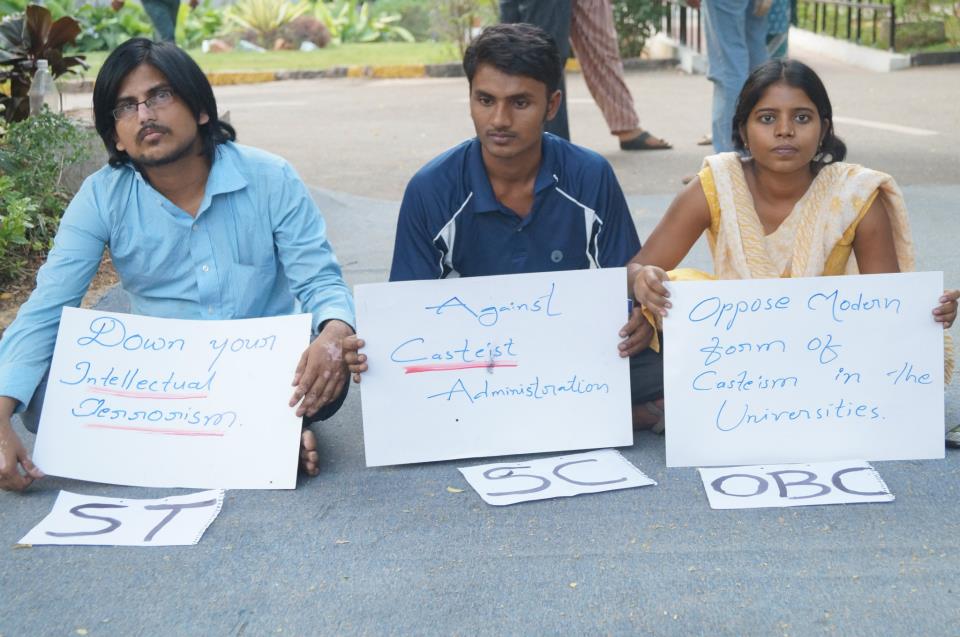Umar Nizar
 “Where do coconut trees go
“Where do coconut trees go
When their roots are declared illegal”.
-Ajmal Khan, `Mappila Verses’
Poetry as a tool of resistance has been wielded by personas ranging from the Hebraic to the Hellenic, from Moses to Kabir. Poet, sociologist and educator, Ajmal Khan in his debut collection of verse, creates a poetic/proto history for the Mappila community. The poet imaginatively deals with the predicament of a group that has inhabited the south west coast of India for millenia, and yet finds itself anathematized in the wake of the CAA and its discontents. The poet writes: `But no lives matter/Some lives aren’t lives’ (Ajmal Khan, Mappila Verses). Here the `Mappila’ is a universal category (as Žižek would say) that becomes a catchall term for all subjugated, subaltern identities throughout the world-Palestinian, Afro-American, Syrian, Rohingya, Lankan Tamil, Kurdish, Yazidi and so on.
Velcheru Narayana Rao, David Schulman and Sanjay Subramaniam in their work `Textures of Time’, argue that unlike modern Europe, South India has no single historical genre. Therefore what was meant to be historical can be mistaken for literature. Thus texture is central to judgement. In his debut collection of poems, Ajmal Khan performs a similar feat; what appears in the guise of literature is at the same time historical. Ajmal Khan through his verses gives a cartographic mapping of the proto history of the subaltern in India.
“Texture does not easily lend itself to structuralist sifting. Binary classifications will look primitive in the light of criteria based on this degree of subtlety. Texture takes us into the warp and weft of a text and demands attention to each of its threads. A historical quality is something that makes itself felt in the weaving of the work as a whole on the basis of markers internal to its frame or process. External criteria-archival or inscription materials, for example, that sometimes interact inter-textually with our historiographic sources-are generally less illuminating in determining questions of category and orientation than what texture so readily provides.” (Velcheru Narayana Rao, David Schulman,Sanjay Subramaniam. `Textures of Time: Writing History in South india 1600-1800’)
In `I am not your Miya’, the poet writes, `As D-voter or D-citizen/From midnight to no sunrise/I stand looking at my own pretty pictures between the/search for documents’. The curse of living in interesting times, means that Indians are going through an inchoate emancipatory upsurge that is sought to be put down by an already formed domain of quasi-elite conservative sub-section of society and its frustrated backlash. Various subaltern poets, performers and writers like Sumit Samos, Chandramohan Sathyanathan and Ajmal Khan are experimenting with various forms and genres to enable the nascent subaltern movements on the ground. It is perhaps not the specific genre in which they write that matters, but the history which they are helping to create.
“Texture thus appears as an alternative to the older insistence on genre, form and structure in a system where history has not crystallised into a single genre“. (Velcheru Narayana Rao, David Schulman,Sanjay Subramaniam. `Textures of Time: Writing History in South india 1600-1800’)
Just as narrative literature is often a delineation of history, the entanglement of genres makes it difficult to discern and distinguish into separate water tight compartments. (Comic-horror is a fascinating amalgamation of genres in contemporary Tamil Cinema, film being the medium most analogous to narrative literature of yore). If literary narratives are historical, then poetry is also part of that process. According to Hayden White’s notion of metahistory, what is figurative at one point can become literary at a later point of time and vice versa. Poetry comprises the historical unveiling of being in its most profound sense. Poetic articulation moves between different dialects and registers.
Ajmal Khan in his verse, recreates the garland (mala) genre of Mappila versification that has been celebrated in the works of the Mahakavi Moinkutty Vaidyar and uses it with exquisite felicity. The majesty of the Mappila dialect finds its full articulation in his works. The poet finds his anchor in the Mappila community. Chahar Darvesh, the translation of a Persian Novel in Arabi-Malayalam can be called the first literary venture in Kerala in novelistic form. Mappila modernity finds a very specific poetic utterance in the `Mappila Verses’.
Indic peoples and traditions have often been classified as being `ahistorical’, the aspersion/judgement often arising from an elision of the richness of historical texture of its narratives. Similarly the subaltern being has been under the sign of erasure for so long that it is taken to be non-existent even in contemporary times. It still finds its most effulgent articulation in the poetry of the mystic saints including Kabir and Ravidas. The being of the subaltern has a structure, and it is not the structure of caste. The logical progressive articulations of the subaltern being in the 20th century is one of the greatest events in Indian history, to which everything else becomes footnotes. The poet here sings the broken being of his people. The poet poignantly says, `The first step in liquidating a people is to erase its memory/Destroy its books’.
Textures of desolation
“They make a desolation and call it peace” – Tacitus
As Velcheru Narayana Rao, David Schulman, and Sanjay suggests, acts of short circuiting racial and literary categories and linguistic frameworks can be crucial since “the very competition, juxtaposition, or merger of differential temporal rhythms opens up the space in which a historical sequence can be conceived, whether it is looped, embedded, flattened out, accelerated, linearised, segmented, collapsed, stretched, staggered or otherwise topologically sensed and described. Here, too, understanding is a matter of sensitivity to the subtle markers that woven into warp, weft and frame, show us what this particular history claims to have been true. Texture, that is. Always provides a strong assertion about the nature of articulated truth’’. The textures of the new subaltern poetry promise a new molecular resistance.
The oppressed Being, in anti-foundationalist times seeks its locus in religion and other outlets. Poetry has been a constant source of inspiration and solace for peoples ranging from the Semites of Egypt to the contemporary subaltern groups in India and elsewhere in the world. The loops of subaltern Being acquires articulation in linguistic utterance, whether written or oral. It could be popular or academic, but always touches the heart. Language thus truly becomes `the house of being’. The warp and weft of that Being find their liminal polarities of historical injustice and textures of expression in a new mode of unique expression. This precisely is being crafted in the `Mappila Verses’. That these poems mark a new epoch in Indian poetry is unmistakable.
Ajmal Khan provokes the liberal imagination with his sharp, pointed lines of verse. He also does the unthinkable, by interpellating an entire poem in Arabic, `Lugathu hadhal ayyam’ (Language these days), which is accompanied by an inverted translation in English, something that even the likes of Denys Johnson-Davies, the translator of Arabi texts, exalted by Edward Saỉd, were unable to pull off. The primacy of English is thus upturned. The soul is elsewhere. Agha Shahid Ali, that exemplar of communal harmony and Indian poetic renaissance, writes “The only language of loss left in the world is Arabic (This was told me in a language not Arabic)’’-Agha Shahid Ali , Call Me Ishmael Tonight
In the poem titled ‘Love’, Ajmal Khan writes, “We looked at each other’s eyes/Caught in each other’s and/Found a new word/Our two different worlds became one/Hearts, Souls and Bodies/Until suddenly asked/What is your name?/When I said My name is…/They said/Love Jihad..”
There is an emptiness, an abyss, that separates identities, genders, races and languages. `Why is there something, rather than nothing?’ is not really the questions that begs an answer. But in the virtual everyday, there actually is a big empty. Zizek, for instance reframes it as `why is there nothing, rather than something?’ This nothing inveigles itself into our lives in various ways. The non-being extends itself to us ontologically. The searing void of identity and citizenship expressed here is significant. The very liminality of the poet’s social location, the edginess, and the so-called `crippled’ flip state itself becomes the poetic Being. This was something even the mystical poets of early modern India could not achieve. The `Mappila Verses’ is thus a magnum opus of contemporary Indian poetry.
Addendum
This is a free translation of `Ishal Shamsoli ‘ a composition by one of the foremost Mappila poets of 19th century Kerala, Mahakavi Moinkutty Vaidyar (1852-1892). He has served as the literary locus of Kerala Muslims for a century and more.
“Time has wrought mellow,
The hearts of people
As if from divine waters
Of frolicking stanzas
Stacked on top of each other…
The miracle of the muse
Plays its havoc
Amongst the beauty of cosmetics
The cosmos, Mary, holy her being
The pleasant concupiscence that cools
The souls of all
Frolicking amidst the gaiety music
The Universe joins in
and gracefully, their feathers
The angels adorn in jauhar
Time has mellowed the souls of all
The stars join in the joy,
Shards of music and joy
Love, in the hearts of many
Shines a torch amidst us
The infernal joys of afterlife
The white adorned heaven, nether joy
Come up in our dreams, pearly
Time has again mellowed the hearts
Stellar stanzas, sparkle, fall and tinkle
Burst into joy, time has mellowed
The hearts of all, join in
In that pure milieu
And grace, adorn and enjoy…”
-Vaidyar, Ishal Shamsoli
~
Bibliography
Abilash.R, Plop! – Notes on Heidegger, Pustaka Digital Media
Ajmal Khan, `The Mappila Verses’, Hawakal Publishers
Velcheru Narayana Rao, David Schulman,Sanjay Subramaniam . `Textures of Time: Writing History in South india 1600-1800’
moinkuttyvaidyar.wordpress.com/blog
~~~
Umar Nizar is a research scholar in JNU.










